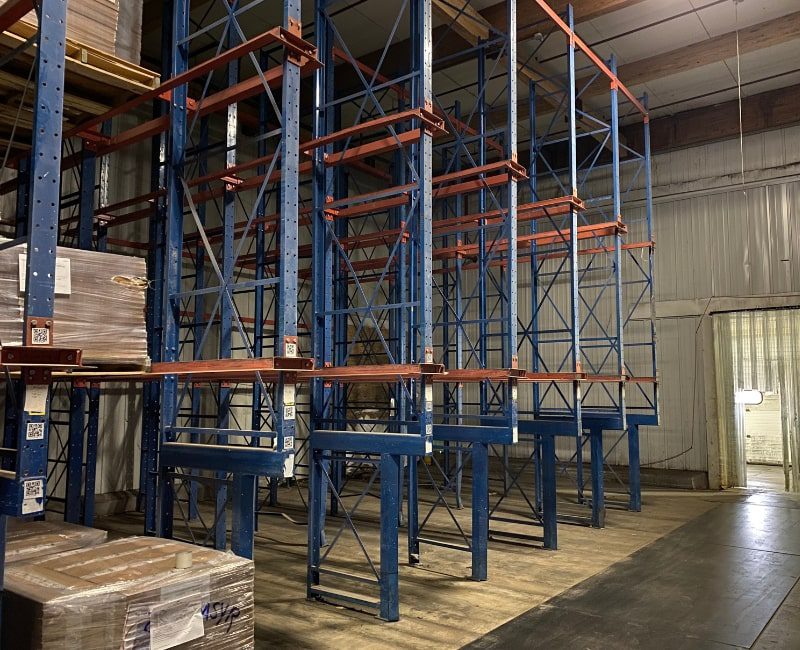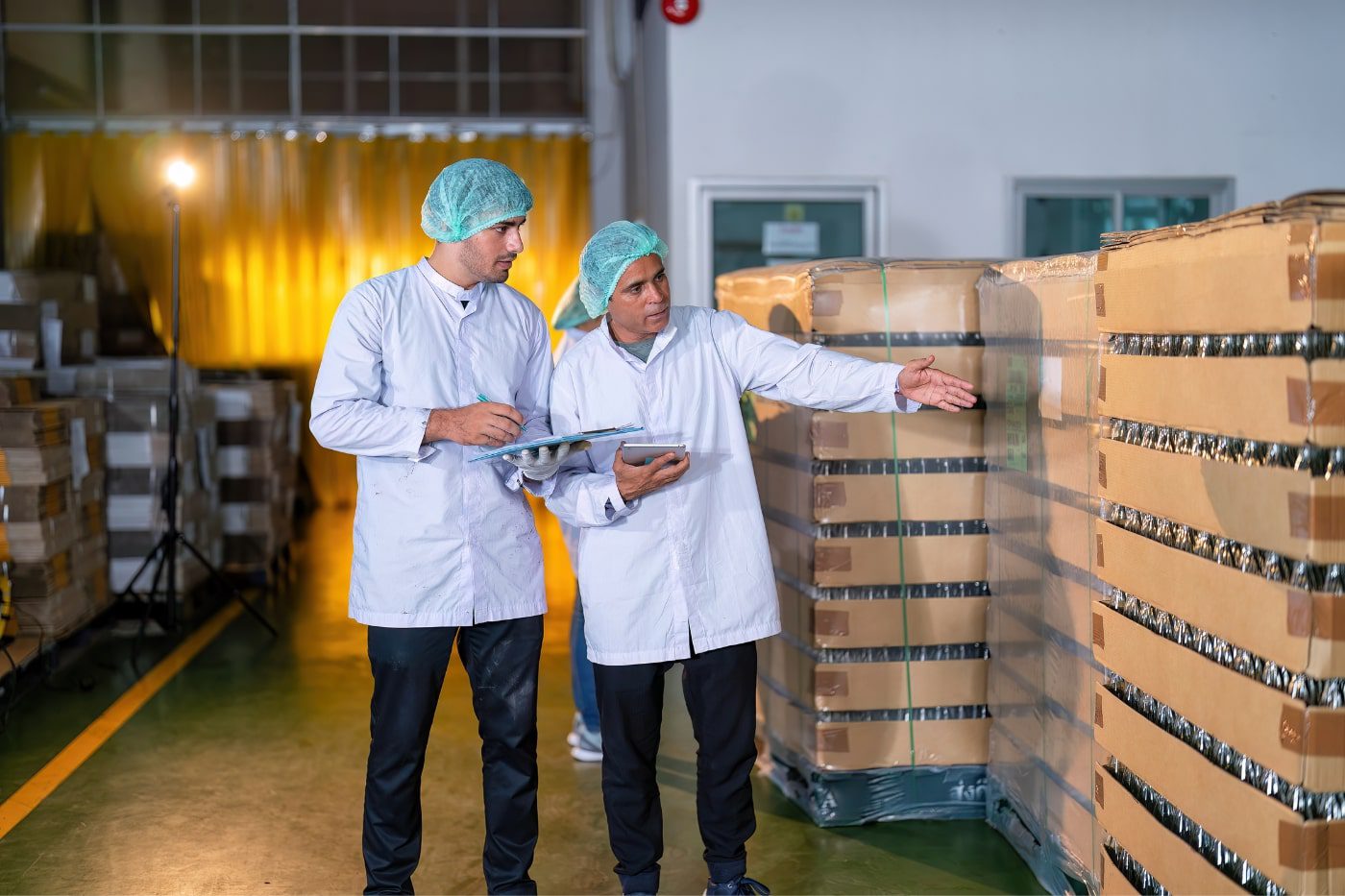Ever wonder how fresh produce arrives crisp and colorful, or how medications maintain their potency while waiting to be shipped? The answer lies in a crucial behind-the-scenes player: cold storage facilities. These specialized warehouses provide a precisely controlled environment to preserve the integrity of temperature-sensitive products.
From perishable food and pharmaceuticals to delicate chemicals and biological materials, cold storage facilities ensure quality, safety, and extended shelf life. By maintaining consistent low temperatures, these warehouses prevent spoilage, maintain product efficacy, and ultimately contribute to a more efficient and reliable supply chain. Cold storage facilities are an invaluable part of the logistics industry, safeguarding the quality and timely delivery of products that touch nearly every aspect of our daily lives.
What is a Cold Storage Facility?
A cold storage facility is a specialized warehouse designed to maintain a precisely controlled, low-temperature environment. Unlike traditional warehouses that focus on general storage and organization, cold storage facilities prioritize temperature control. This is achieved through a combination of robust insulation and advanced refrigeration systems. These facilities can maintain temperatures ranging from just above freezing (around 33°F) to well below freezing (as low as -30°F), catering to the specific needs of a diverse range of products.

Key features that differentiate cold storage facilities from regular warehouses include:
Heavy-duty insulation: Walls, ceilings, and floors are constructed with exceptional insulating materials to minimize heat transfer and maintain consistent internal temperatures.
Advanced refrigeration systems: Sophisticated cooling systems continuously remove heat and maintain desired temperatures.
Temperature monitoring and control systems: Real-time temperature monitoring ensures consistent conditions and triggers alarms in case of fluctuations.
Specialized doors and dock seals: Designed to minimize air infiltration and maintain temperature integrity when loading and unloading goods.
The Role of Cold Storage in the Supply Chain
Cold storage facilities play a vital role in ensuring product quality and safety throughout the supply chain. By maintaining consistent low temperatures, these warehouses prevent spoilage and the growth of harmful bacteria that can compromise food and pharmaceuticals. This not only protects consumers but also reduces waste and ensures the efficient use of resources.
Several industries rely heavily on cold storage facilities, including:
Food and Beverage: From fresh produce and dairy products to frozen meats and seafood, cold storage is essential for maintaining food safety and quality throughout the supply chain.
Pharmaceuticals and Life Sciences: Many medications and biological materials require strict temperature control to maintain their efficacy. Cold storage facilities ensure the safe and effective delivery of these critical products.
Chemicals and Industrial Products: Certain chemicals and other industrial materials degrade or become unstable at high temperatures. Cold storage safeguards the integrity of these products during storage and transportation.
Cold storage facilities are much more than just refrigerated warehouses. They are a cornerstone of the modern supply chain, ensuring the safe, fresh, and effective delivery of a vast array of temperature-sensitive products.
How Cold Storage Facilities Work
The success of a cold storage facility hinges on its ability to maintain a precisely controlled environment. Unlike a standard warehouse, cold storage prioritizes temperature control. This section delves into the key mechanisms that create and sustain this crucial climate, ensuring the quality and safety of stored products.

Insulation
The first line of defense in maintaining consistent temperatures is a robust insulation system. Cold storage facilities utilize thick layers of specialized insulation materials in walls, ceilings, and floors. These materials have exceptionally low thermal conductivity, meaning they impede the transfer of heat from the outside environment into the cooler warehouse interior. This significantly reduces the workload placed on the refrigeration system.
Refrigeration Systems
While insulation slows heat transfer, dedicated refrigeration systems actively remove heat from the warehouse air to maintain desired temperatures. These systems typically function in a closed loop, circulating a coolant throughout the facility. Here’s a simplified breakdown of the process:
Types of Cooling Systems: Common coolants used in cold storage facilities include ammonia and glycol. Ammonia offers superior efficiency but requires specialized safety measures. Glycol, on the other hand, is less efficient but presents a lower safety risk.
The Cooling Cycle: The coolant absorbs heat from the warehouse air as it circulates through evaporator coils. This warm coolant then travels to the compressor, where it’s compressed, raising its pressure and temperature. The hot, high-pressure coolant then flows through condenser coils, where heat is released to the outside environment, often with the help of fans or cooling towers. Finally, the cooled, low-pressure coolant returns to the evaporator coils to repeat the cycle.
Temperature Zones and Product Storage
Not all cold storage facilities maintain a uniform temperature. They are often divided into multiple temperature zones catering to the specific needs of different products.
Chilled vs. Frozen Zones: Typically, cold storage facilities have two main temperature zones: chilled and frozen. Chilled zones generally maintain temperatures between 33°F and 55°F, ideal for fresh produce, dairy products, and some beverages. Frozen zones operate at much lower temperatures, ranging from -10°F to -30°F, suitable for frozen foods, medications, and other products requiring extreme cold storage.
Temperature-Specific Storage: Within these zones, product storage is further optimized based on specific temperature requirements. For instance, some fruits and vegetables thrive in slightly higher temperatures compared to meats. Warehouse layout and product organization play a crucial role in optimizing storage and retrieval. Products are often placed on pallets and organized in designated areas within each temperature zone, ensuring efficient access and minimizing temperature fluctuations when retrieving items.
By combining robust insulation with efficient refrigeration systems and strategic temperature zoning, cold storage facilities create the perfect environment to preserve a vast array of temperature-sensitive products.
Additional Considerations for Cold Storage
Maintaining a controlled environment within a cold storage facility goes beyond just temperature regulation. Here, we explore some crucial secondary considerations that ensure quality control and product safety.

Temperature Monitoring and Control Systems
Even with robust systems in place, constant vigilance is essential. Real-time temperature monitoring systems are key, providing a constant check on the internal climate. These systems employ strategically placed sensors throughout the facility to track temperatures in real-time.
Preventing the Unexpected: In the event of temperature fluctuations that fall outside the designated range, alarm systems are triggered, notifying personnel of potential issues. This allows for prompt intervention to prevent spoilage or compromised product integrity.
Backup Protocols: Cold storage facilities often have backup protocols in place for critical equipment failures. Redundant systems or backup generators ensure that temperature control remains uninterrupted even in case of power outages or equipment malfunctions.
Maintaining Sanitary Conditions
Sanitary protocols are paramount within cold storage facilities to prevent contamination and ensure product safety.
Hygiene is Key: Regular cleaning and sanitation procedures are implemented to minimize the risk of bacterial growth or the presence of harmful pathogens. This may involve using specialized cleaning agents and maintaining strict hygiene protocols for staff.
Ensuring Fresh Air Circulation: Proper air circulation and ventilation systems are crucial to remove moisture and prevent condensation buildup. This helps to control the growth of mold and mildew, further safeguarding product integrity.
Security and Access Control
Cold storage facilities often house high-value inventory, making security a top priority.
Keeping Products Safe: Measures like security fencing, surveillance cameras, and alarm systems deter unauthorized access and potential theft.
Restricted Entry Protocols: Access control systems and restricted entry protocols ensure that only authorized personnel can enter specific storage areas. This minimizes the risk of product tampering or mishandling.
By implementing these additional considerations, cold storage facilities create a safe, secure, and sanitary environment for storing temperature-sensitive products. This comprehensive approach ensures the quality, safety, and integrity of these products throughout the supply chain.
Blast Freezing Technology in Cold Storage
While cold storage facilities provide a controlled environment for long-term preservation, blast freezing offers an additional layer of protection for certain products. This rapid freezing technique complements cold storage by significantly extending shelf life and locking in peak freshness.

What is Blast Freezing?
Blast freezing is a rapid freezing technique that utilizes extremely low temperatures (often reaching -40°F or below) and high-velocity air circulation to freeze food items much faster than traditional methods. Unlike standard freezer temperatures that hover around 0°F, blast freezing achieves a significant reduction in temperature in a much shorter timeframe, typically within a few hours.
The key difference lies in crystal formation. During slower freezing, large ice crystals form within the cellular structure of food. These crystals can puncture cell walls, leading to textural changes, loss of flavor, and potential spoilage upon thawing. Blast freezing, on the other hand, rapidly freezes the product, minimizing the formation of large ice crystals. This helps maintain the cell structure, texture, and overall quality of the food.
How Does Blast Freezing Work?
Blast freezers create an environment conducive to rapid freezing through two key elements:
Ultra-Low Temperatures: As mentioned earlier, blast freezers reach temperatures as low as -40°F, significantly colder than standard freezers. This rapid temperature drop initiates the freezing process almost instantaneously.
High Air Circulation: Powerful fans circulate frigid air throughout the chamber, ensuring that the cold air reaches every crevice. This rapid and even distribution of cold air minimizes the time it takes for the food to reach its frozen state.
The combined effect of these elements is a rapid and uniform freezing process that minimizes ice crystal formation and preserves the cellular integrity of the food. This translates to superior quality, taste, and extended shelf life when compared to traditionally frozen items.
Applications of Blast Freezing
Blast freezing offers significant advantages for a variety of food items:
Fruits and Vegetables: Blast freezing helps lock in peak freshness, color, and texture of fruits and vegetables.
Meats and Seafood: Rapid freezing preserves the tenderness and flavor of meats and seafood.
Pre-Prepared Meals: Blast freezing allows for the preservation of pre-cooked meals without compromising quality or taste.
Beyond the food industry, blast freezing finds applications in other sectors as well:
Pharmaceuticals: This technique is used to preserve the efficacy of certain temperature-sensitive medications.
Prepared Biological Samples: Blast freezing is used to preserve the integrity of biological samples for research purposes.
By leveraging blast freezing technology alongside well-maintained cold storage facilities, businesses can ensure the highest quality and extended shelf life for their temperature-sensitive products.
Unlock Efficiency with Cold Storage Solutions
Cold storage facilities are essential in preserving the quality, safety, and integrity of temperature-sensitive products across various industries. From ensuring the freshness of our produce to safeguarding the efficacy of life-saving medications, cold storage facilities operate behind the scenes, guaranteeing a safe and reliable supply chain.
At Hanzo Logistics, we understand the significance of specialized warehousing. We offer a comprehensive suite of services, including cold storage solutions, advanced temperature control systems, and state-of-the-art blast freezing technology. Partner with us today and let our cold storage expertise guide your business toward a successful and temperature-controlled future. Our team is dedicated to providing customized solutions to meet your needs.



